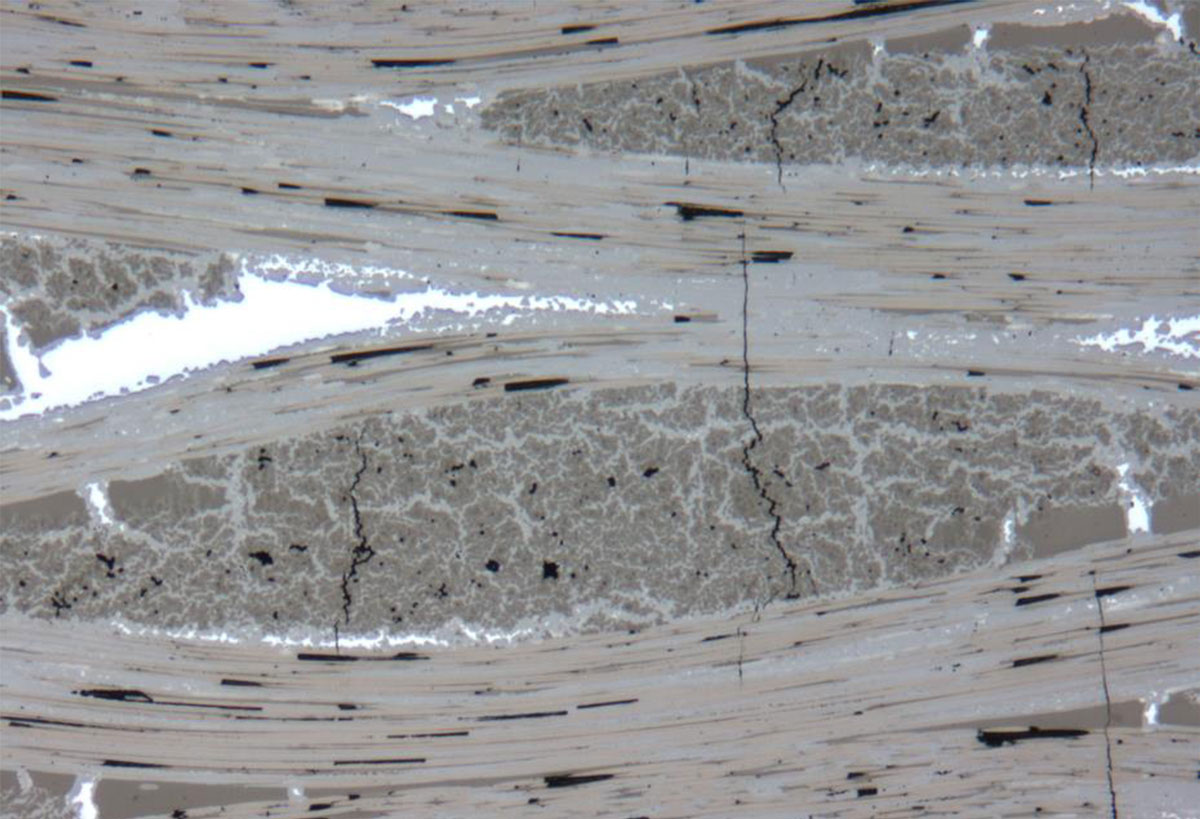




The C/SiC of LCT GmbH was developed as part of a project for emergency braking systems for elevators with high masses and speeds at the University of Bayreuth. Depending on the phase composition, this composite can be tailored to be either high strength or high friction under extreme thermal and mechanical stress. On the left is an example of the microstructure of our high-strength C/SiC.
The C/SiC of LCT GmbH was developed as part of a project for emergency braking systems for elevators with high masses and speeds at the University of Bayreuth. Depending on the phase composition, this composite can be tailored to be either high strength or high friction under extreme thermal and mechanical stress. On the left is an example of the microstructure of our high-strength C/SiC.

The hard and low-wear C/SiC can be seen in the right picture. Depending on how we combine the two composite types, both in terms of sequence and layer thickness, we can further optimize your desired final product. This results in many possible components for a wide variety of applications – as shown in the following material portfolio.





Aerospace, applications > 200 °C (where aluminum and CFRP is limited)
Hypersonic missiles, aerospace technologies, clutches, safety brake systems (e.g. trains, electric cars, elevators and planes)
Brake pads, wear protection, oxidation protection
Personal – and vehicle protection (wests, amoring)

Aerospace, applications > 200 °C (where aluminum and CFRP is limited)

Hypersonic missiles, aerospace technologies, clutches, safety brake systems (e.g. trains, electric cars, elevators and planes)

Brake pads, wear protection, oxidation protection

Personal - and vehicle protection (wests, amoring)